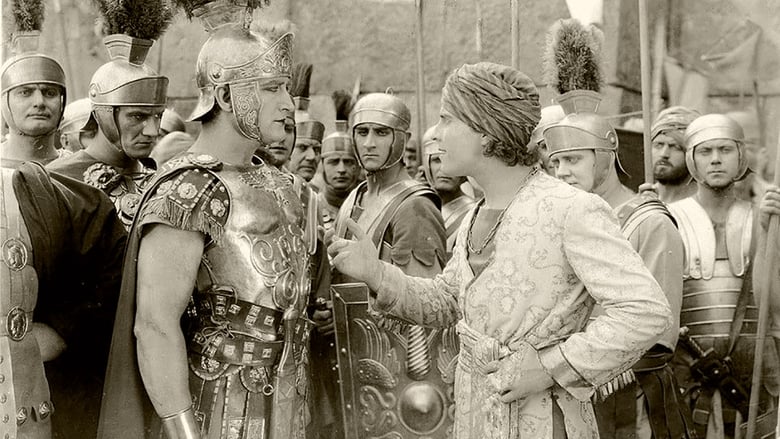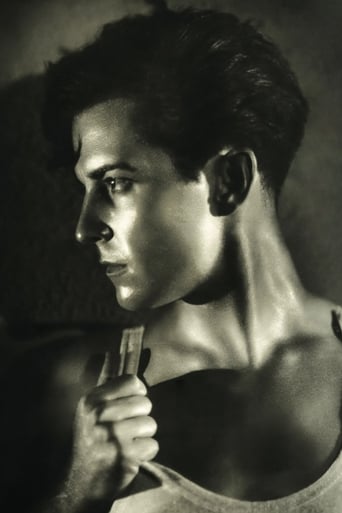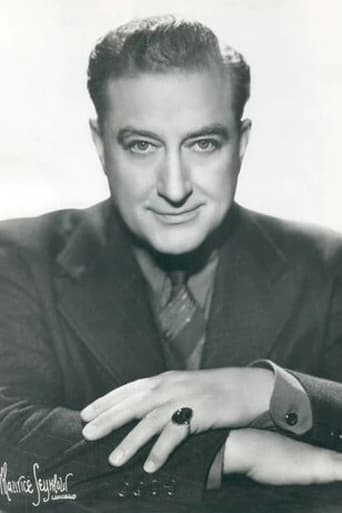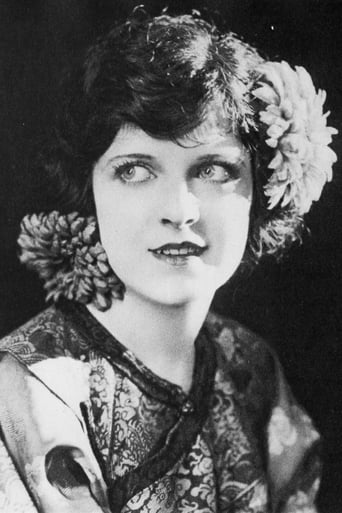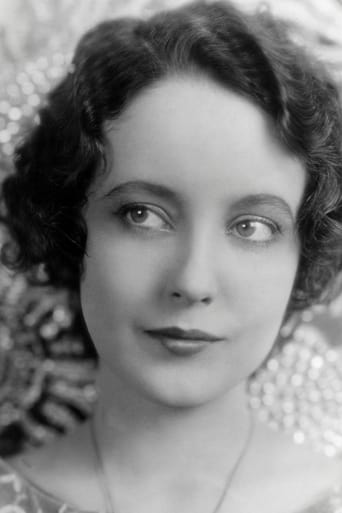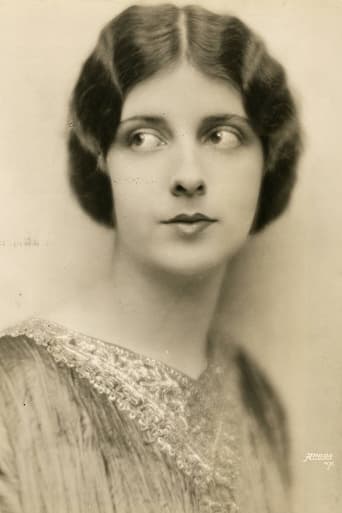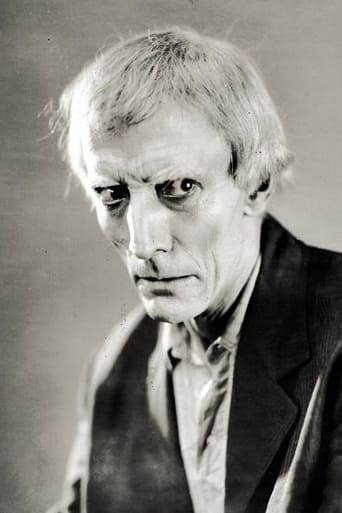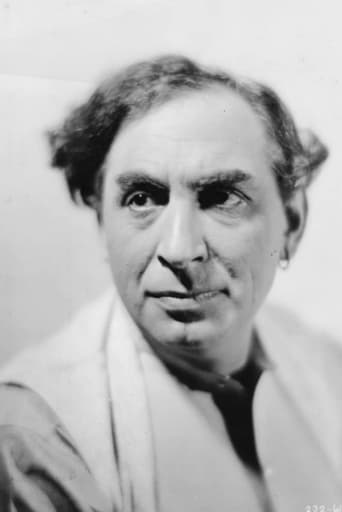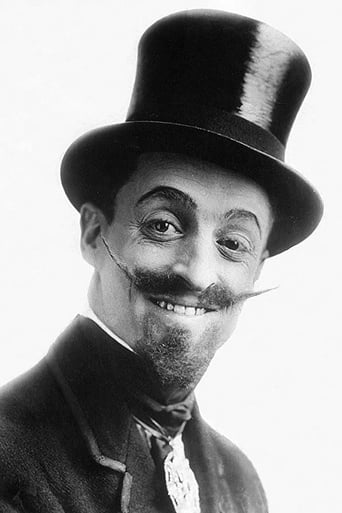
Erstwhile childhood friends, Judah Ben-Hur and Messala meet again as adults, this time with Roman officer Messala as conqueror and Judah as a wealthy, though conquered, Israelite. A slip of a brick during a Roman parade causes Judah to be sent off as a galley slave, his property confiscated and his mother and sister imprisoned. Years later, as a result of his determination to stay alive and his willingness to aid his Roman master, Judah returns to his homeland an exalted and wealthy Roman athlete. Unable to find his mother and sister, and believing them dead, he can think of nothing else than revenge against Messala.
Similar titles
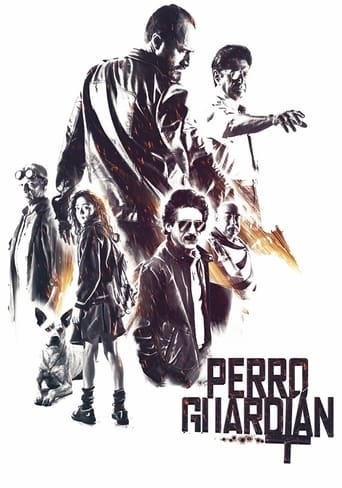
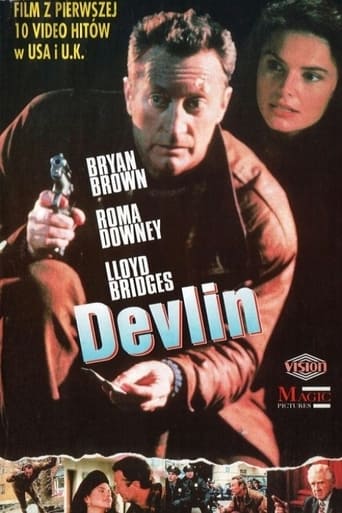
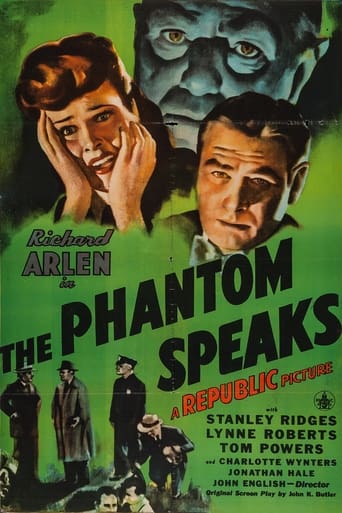
You May Also Like
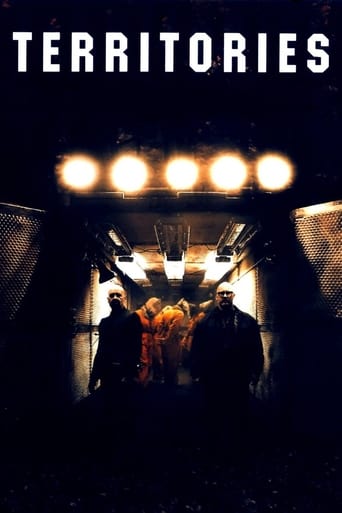
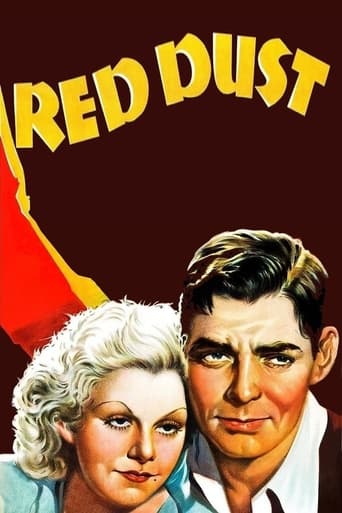
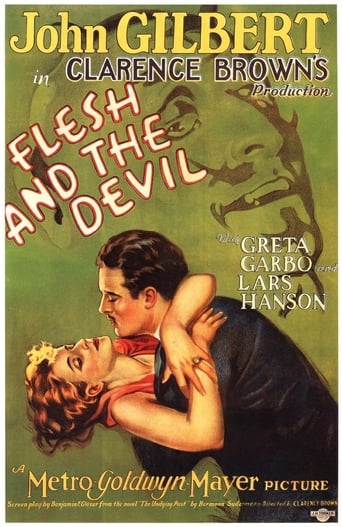
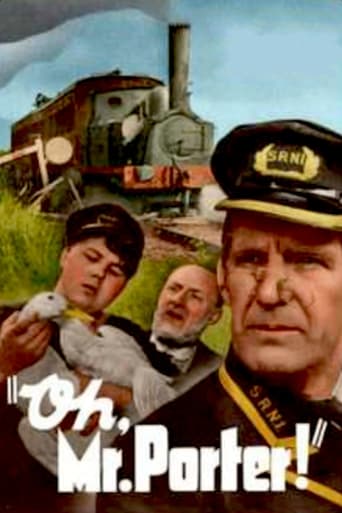
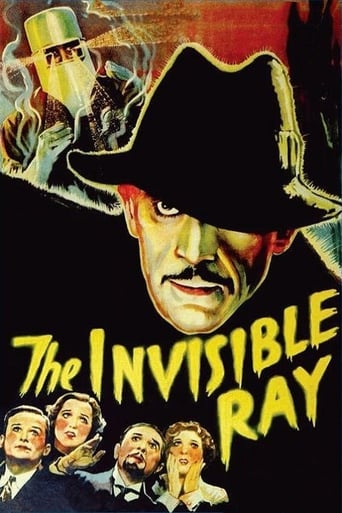
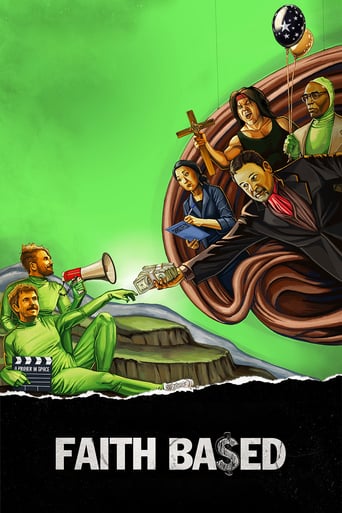
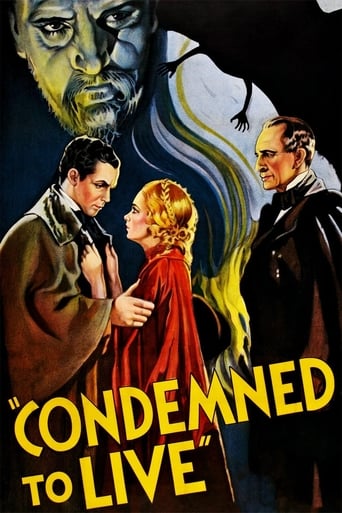
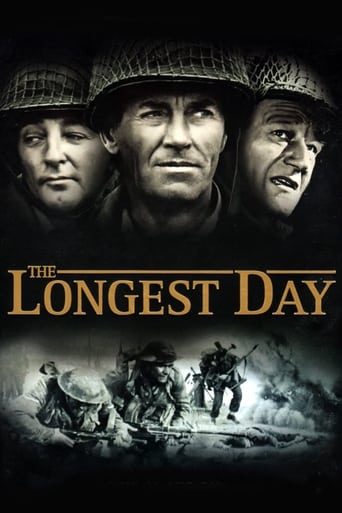


Reviews
Good story, Not enough for a whole film
Good , But It Is Overrated By Some
A film with more than the usual spoiler issues. Talking about it in any detail feels akin to handing you a gift-wrapped present and saying, "I hope you like it -- It's a thriller about a diabolical secret experiment."
what a terribly boring film. I'm sorry but this is absolutely not deserving of best picture and will be forgotten quickly. Entertaining and engaging cinema? No. Nothing performances with flat faces and mistaking silence for subtlety.
Nice silent rendition that still stands as the all-time silent classic , including marvelously staged battle ships and overwhelming chariot races . It packs impressive scenes that still look nice , in spite of age . Childhood friends , Judah Ben-Hur (Ramon Novarro) and Messala (Francis X Bushman) meet again one time grown-up . Now as experienced adults , this time Messala is a Roman officer , a tough conqueror against the Jews and Judah as a rich noble , though conquered , Israelite . When in Jerusalem takes place a Roman parade , spontaneously falling a brick that causes Judah to be sent off as a galley slave , his ownership confiscated and his mother and sister Tirzah (Kathleen Key) imprisoned at an impregnable jail . But the brave Ben Hur goes on his determination to stay alive and saves the Roman general Quinto Arrio when they are attacked by a pirate galleon , and he , then , becomes his fostered son . Several years later Judah goes backs his homeland . Unable to locate his mummy and sister, and believing them dead , he can think of nothing else than vendetta against Messala . Meanwhile , Ben Hur falls for Esther (May McAvoy) , daughter of Simonides (Nigel Of Brulier) . The second movie of the acclaimed novel , being lavishly produced , stars Ramón Novarro and Francis X. Buxman as Messala . Novarro is good in the known role as wealthy Palestinan battling the Roman Empire . The chariot race required thousands of extras on sets constructed on lots of acres of backlot at Metro Goldwyn Mayer Studios . The MGM production costs were massive millions of dollars , as a lot of chariots were built , with half being used for practice . The race took various weeks to film . The known chariot scene was shot at what is now the intersection of La Cienega and Venice Boulevards in Los Angeles . Although problems lingered on the production and at a cost of over 4.000.000 dollars . The initial Italian set was eventually torn down and a new one built in Culver City , California . Attractive images , majestic set design , glamorous photography in black and white , evocative as well as rousing musical score subsequently added by the great composer Carl Davis combine to cast a spellbinding movie . The motion picture was stunningly realized by director Fred Niblo helped by Second-unit director B. Reeves Eason and Cliff Lyons ; being a hit smash at the box office . In 1931 , a shortened version was released . Rating : 8 , extraordinary and awesome , it ranked as the most expensive movie of its time and took years to end ; it is one of the greatest films in the genre "Epic". Ben-Hur still stands as the all-time silent classic . Other retellings based on this vintage novel written by Lewis Wallace are the followings : The classic version ¨Ben-Hur¨ won a record 11 Ocars , directed by William Wyler with Charlton Heston , Stephen Boyd , Haya Harareet , Jack Hawkins , Sam Jaffe , Finlay Currie , Martha Scott , Cathy O'Donnell , in which stuntman Cliff Lyons worked a Stuntman/chariot driver in both versions : 1925 and 1959 ; cartoon version (2003) by Bill Kowalchuck with prologue by Charlton Heston and ¨Ben-Hur¨ TV series by Steven Shrill with Joseph Morgan , Stephen Campbell Moore , Kristen Krouk , Simon Andreu and Lucia Jimenez
When MGM released Ben-Hur in 1925 the studio was only a year old. This and The Big Parade insured the lasting success of this union of many small studios that became the Tiffany studio of Hollywood. The success however was a mighty close run thing.The Goldwyn part of Metro-Goldwyn-Mayer had the property and brought it to the studio when the merger took place. Sam Goldwyn himself had no connection with the studio that bore his name when the conglomeration was formed.But I'd hate to think he was the guy who made the deal on the original property. According to the Films Of MGM book, Goldwyn Studios wanted the film rights so bad that they bought the novel and the play the novel was made from with an agreement to give 50% of the profits to the original owners which was the Klaw/Erlanger theatrical producers and Florenz Ziegfeld who probably bought the stage rights from them.Why would they make such a deal? Well next to the Bible and later for a while Gone With The Wind, Ben-Hur was the largest selling book in the history of the English language. Even 50% profit they envisioned at Goldwyn would bring lots of cash.But the usual problem of cost productions swelled the budget, the film was shot partially in Italy and later brought back to Hollywood when the bean counters saw the numbers going through the roof. When it finally did hit the big screen, it never quite made back what the cost was. It took The Big Parade to put MGM in the black that year and keep it there for a while.With some deviations the plot of Ben-Hur runs pretty close to that of the more familiar sound version where Charlton Heston won his Academy Award for Best Actor. Ramon Novarro and Francis X. Bushman play Ben-Hur and Messala the Jewish aristocrat and the Roman Tribune, childhood friends and adult enemies. The character of Hur house steward Simonides is radically different. Instead of loyal Sam Jaffe, we have Nigel DeBrulier who instead of hiding the Hur fortune, lives pretty good off it. Honestly, he thinks Ben-Hur died in the galleys and he is trying to provide for daughter Esther played by May McAvoy.There is one character who does not appear in the sound version, Egyptian siren Carmel Myers. She's Messala's girl friend and a sly little minx. He sends her off to vamp the new mysterious chariot driver who says he's going to take Messala down in the chariot races and find out who he is. Carmel is quite the temptress to say the least.For 1925 the spectacle is indeed awesome, the chariot race is every bit as thrilling as the one that Charlton Heston and Stephen Boyd did in the 1959 version. The sea battle isn't quite up to what the 1959 version was, but special effects are always improving. A computer graphics chariot race would indeed be something.Besides the stars of the film, Ben-Hur served as some kind of training ground and a place to be in. Take a look at the credits and you'll see such folks as John and Lionel Barrymore, Douglas Fairbanks and many other silent screen leads listed as uncredited extras in the crowd scenes. Also such up and coming folks like Clark Gable, Gary Cooper, Joan Crawford, and Myrna Loy are all just unknown extras and somewhere in Ben-Hur. The basic themes of General Lew Wallace's novel are kept intact and if the box office didn't quite pull MGM out of the hole, it certainly gave the studio its first real prestige picture.
Of all motion picture genres, the ancient world epic is the only one in which the silents were usually superior to their talking counterparts. With the emotional distance of a bygone age, the pompous dialogue, not to mention the focus on the spectacular, here, if ever there was one, is a type of story best told purely in images.The 1925 Ben-Hur is probably the finest of all the 1920s epics. A lot of this is down to its (uncredited) producer, "boy-wonder" Irving Thalberg. Although there is very little consistency in the genres or kinds of story in Thalberg's productions, his hallmark seems to be that he was willing to push the boat out creatively. He never just plumped for the most commercial option, yet never lost sight of what was entertaining. Hence his pictures were almost always hits, but they were never mere instant-appeal audience-fodder. He refused to compromise on quality in any department, and in Ben-Hur the editing of Lloyd Nosler and the cinematography in particular deserve honourable mentions. Thalberg had taken over the project half-way through shooting, and it's exemplary of his belief in quality over easy profits that he recast virtually ever actor, changed the crew and scrapped the old footage, sending the budget skyrocketing but ending up with a finer finished product.Among the replacement crew was director Fred Niblo. While there are a few other directors associated with this production, they shouldn't really be counted as most of their footage was ditched when Niblo was brought on board. And he is really perfectly suited to this material. His sense of movement and rhythm, especially in crowd scenes, is exceptional. A great example is in the leper cave, when Miriam and Tirzah exit away from camera, screen left, a leper crawls towards the water from screen right, echoing their movement. Niblo was also one of the best action directors of his era, as evidenced in the highly imaginative sequence of images in the sea battle. For the chariot race the emphasis is on speed, partly because Thalberg offered a $100 prize to the winner, but also because the camera rarely takes the position of a spectator, almost constantly moving with the chariots. The excitement is heightened because the camera cars occasionally move faster when behind a chariot or slower when in front of chariot, to give the effect of dollying in on the action.Niblo was also capable of coaxing tenderness and poignancy out of the smaller scenes. He recognises that the lavish sets and masses of extras can't be a continuous backdrop, and has the sense to stage the most important interactions in front of plain backgrounds, focusing us entirely on the actors. He brings an emotional depth to many sequences – something almost impossible to achieve in this kind of picture –by holding performers in uninterrupted takes and simply allowing them to emote with subtle gestures and facial expressions. The scene in which Miriam and Tirzah find Judah asleep in the Hur palace is by far the most moving I have seen in any ancient-world epic, sound or silent. Luckily Thalberg was smart enough to keep those long takes in the picture, rather than having every second of footage not essential to the story cropped or broken up with superficial title cards. It may seem unusual to see these extended emotional sequences in a picture that doesn't spend much time on characterisation or verbal interaction, but it is a perfect use of silent cinema form nonetheless.This Ben-Hur retains the subtitle of Lew Wallace's novel – "A Tale of the Christ", and the religious angle is more integral to the story here than in the 1959 version. In 1959 Jesus was only ever shown from behind, and this is sometimes hailed as a stroke of genius. However his appearance in 1925 is even more tentative, just a hand emerging from offscreen. Of course it is very much like Niblo to use close-ups of hands to define characters, just as it very much like William Wyler (director in 1959) to film actors from behind, but I believe both portrayals owe something to the 19th century stage production, in which the actor playing Jesus kept his back to the audience. In each case this was apparently done out of a religious sense of respect, but I feel the "hands-only" Jesus of 1925 is the most effective because it shows the Christ figure purely as a presence, continuously felt but always just out of sight.Probably the only respect in which the 1959 Ben-Hur is superior to the 1925 version is in its characterisation. The later film is one of the few genuine character-driven epics, with a screenplay that delves into the depths of each relationship, going to lengths to show the different facets of each figure. By comparison the characters in 1925 are simplistic to the point of being crude. Francis X. Bushman's Messala is such an out-and-out villain it's hard for us to accept he was ever likable, whereas we can totally believe that Charlton Heston and Stephen Boyd were childhood friends. It's true that for the most part, the 1920s were still an age of one-dimensional pantomime figures, but the silent epics never tried to be deep or realistic, and any epic that tries to be will ultimately fail, even in the sound era. Instead these pictures thrive on their mood, their grace and their captivating imagery, and the realisation of this by Thalberg and Niblo make the silent Ben-Hur one of the best.
BEN-HUR The Four-Disc Collector's EditionIt is an ignominious fate that the Original Ben-Hur by which I mean the 1925 silent version has appeared as a bonus feature on the William Wyler's Ben-Hur Four-Disc Collector's Edition. The 1925 Ben-Hur was a huge success. To this day it is still the most successful silent picture ever made. The sensational chariot race as with the William Wyler re-make was at the heart of the movie. It was the first time a Cinema audience had seen such awe-inspiring images. Such as four stallions and a speeding chariot racing directly over the top of a Camera sunk in the Arena track. The first the time a Camera followed a team of horses in close-up and at full gallop. So many film techniques that we take for granted in Action Cinema today were first born in this silent epic and they would be remembered.William Wyler remembered them 34 years later.William Wyler had been an assistant director on the 1925 Original. He had witnessed its staggering success and when the time came for a re-make he was just the man for the job. Maybe you balk at my use of the word re-make? But that is exactly what the William Wyler version was. The studio knew they had a product that worked and did not want to divert from that winning formula. If it ain't broke .!The Arena built in Italy was a virtual replica of the one built in the silent version. They utilized the original construction drawings. They used some of the same moulds for various statues. They even had a complete chariot from the 1925 Original that had already proved itself on film. They had the original designs and drawings of virtually everything that had been constructed 34 years previously and they all worked. On the Extras Disc there is a rather lame documentary called "The Epic that Changed Cinema" where filmmakers repetitively praise the 1959 re-make. A Production Designer expresses his amazement at the imagination it took to design the Arena specifically those gigantic statues at each end of it. Had he seen the Original 1925 Film he would have seen that the Arena and particularly the gigantic statues are all but the same.None of this is touched upon in the two documentaries that are presented on the special features disc. Nothing is mentioned about the suppression of the Original Version by MGM in the run-up to the release of the William Wyler's Ben-Hur or it's eventual burial.The 1925 Ben-Hur is a rather melodramatic and histrionic affair. Most of the performances are over the top and it has the feeling of recorded theatre rather than a movie but what lifts this film into the realms of a classic is simply the chariot race. It is as good as the William Wyler version if not better. It has more chariots!It is a shame that the Silent Original does not have any bonus features. A documentary by Kevin Brownlow could have solved this shameful emission, as the man is responsible for it's restoration and survival. He is also one of the best documentary filmmakers out there. Just watch his Thames Television series called "Hollywood" about America's early film pioneers or "Unknown Chaplin" and you will see what I mean.As for the William Wyler's re-make the same seems to apply. The chariot race is the highlight of the film. The race is remarkably similar in structure, blocking and interpretation as that of the Original. Most of the shots and camera positions are an exactly the same. The rest of William Wyler's epic never really elevates above pure melodrama. The exceptional perfor mance by Hugh Griffith lends the film a much-needed sense of intrigue but generally the film plays by the numbers. The weak latter half of the film almost feels as if you are watching Monty Python's "Life of Brian". The film uses all of the technologies available at the time to best effect. It is beautifully shot in Camera 65 by Robert L. Surtees. It has incredible matt paintings. The production design is romantic yet faultless. The Hollywoodised costumes are beautiful.Gore Vidal is acknowledged to have written the first half of the film up until the chariot race. He is disgracefully not even credited. These early scenes are far superior to the latter plodding religious pontificating. In the first scenes between Ben-Hur and Messala, he has cleverly interwoven a homosexual love affair gone terribly wrong. It explains clearly Messala's brutal reaction. He also has a poke at the waning Un-American Committee by having Messala demand that Ben-Hur name names.The problem with the films as a whole is the source material that they are based on. The Novel is melodramatic, shallow and episodic. Even the title is incorrect "A Story of the Christ". It might be the most read book other than the bible but it does not mean that it is any good. It is simply a compelling adventure yarn with Christ thrown in and as with the films the best part is the chariot race.
Top Streaming Movies











